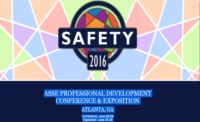I think the most significant pivot that the OSH profession has made in the past 50 years is from looking outward, externally, taking its cues from OSHA, to looking inward, at personal leadership development, soft skills building, organizational cultures and shifting climates, management systems and non-regulatory practices and interventions.
OSHA is old news at this point, especially for companies with mature safety and health programs. For many companies with full-time professionals it is a time of looking inward, internally within the organization, to conduct needs assessments; perception surveys; build and sustain cultures as mentioned; examine diversity, equity and inclusion issues; get involved in environment, social and governance (ESG) performance scores increasingly important on Wall Street; and tackle hot topic pressing issues such as preventing workplace violence, controlling infectious diseases; building organizational resilience, business continuity assurances and emergency preparedness plans for extreme unpredictable weather. Oh, and take a hard look at what the organization is doing, or not doing, to improve employee well-being and mental as well as physical health.
The biggest external influences on pros today could be ANSI, NFPA (especially 70E), and ISO voluntary standards, such as the ISO 31000 risk management standard and the ISO 45001 family of OSH management systems standards – which now for the time covers managing psychological health in the workplace.
In 2022, professionals are rethinking traditional practices and studying new concepts and principles. The catch phrase is Safety Differently. Also the title of a book by Sydny Dekker, an Australian safety consultant and university professor. The question is being asked: should safety and health be practiced differently? Can it be? Are we looking at the right things? Should the emphasis move from needing committed managers and having hazard hunts to discovering organizational deficiencies that undermine both safety and operational performance?
Perhaps this line of questioning should have been asked years ago. The unexamined profession is at risk, to paraphrase Plate. But for years there was this preoccupation, some will say distraction, with OSHA.
All things must pass, and the OSH profession’s OSHA-centric practices is one of them.



